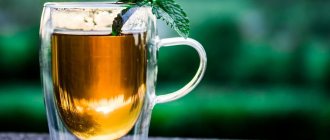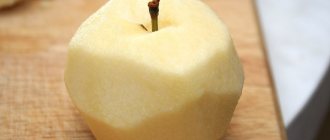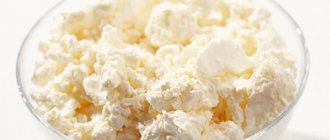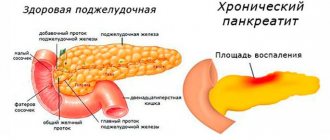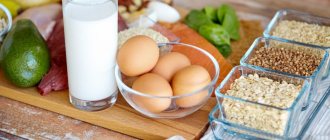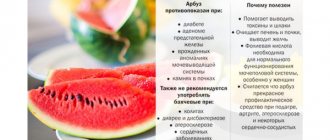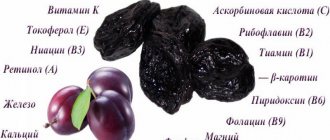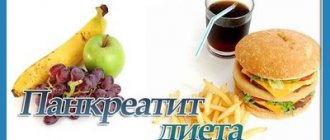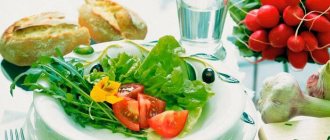Kefir is an easily digestible food product that supplies the human body with many vital substances. It contains bifidobacteria, lactic acid fungi, vitamins A, B2, B5, B12, C, H, PP and trace elements calcium, magnesium, phosphorus, potassium, chlorine, sodium, sulfur.
At the same time, calcium obtained from kefir is absorbed better than from regular milk. Kefir helps strengthen the immune system. Normalizes metabolism. But is it possible to use kefir for pancreatitis?
What kind of product is kefir? A little history
Kefir is considered a healthy product
Everyone knows that this is a fermented milk product obtained as a result of fermentation. There is a rather mysterious and romantic story associated with its spread. Once upon a time, in the second half of the 19th - early 20th centuries, the production of this living drink was carried out by the Karachais who lived at the foot of Elbrus, in the Teberda valley. They sold kefir, but carefully hid the secret of its production.
A young girl, a graduate of the St. Petersburg Dairy School, Irina Sakharova, after graduation, was sent to the Caucasus in order to find out the secret recipe for making the drink. But the cunning Karachais did not want to give away the secret that fed the whole people. At that time, the sale of fermented milk drink was their main source of income.
She was going to return to her homeland, but five horsemen caught up with her and took her away by force. The fact was that the closest relative of Uzden Bekmurza Baichorov fell in love with her. The case became scandalous and went to trial. Irina forgave the young man in love, but as moral compensation she begged for a recipe for making a secret drink.
So, kefir appeared in St. Petersburg. A fierce advocate of this product and other forms of probiotics throughout his life was Ilya Mechnikov, Nobel Prize winner. The closest relatives of the Karachay fermented milk product are Georgian matsoni and Azerbaijani gatikh.
Foods that harm the pancreas
Experts in the field of natural medicine believe that the quality and duration of our lives depends on the functioning of the pancreas. In simple words, the faster it wears out, the higher the risk of premature death.
Excessive inadequate nutrition destroys the pancreas. How to ensure the safety of this important organ and avoid many troubles?
The pancreas is responsible for breaking down food eaten by a person in the intestines and producing the hormone insulin.
From birth, we ruthlessly exploit this gland, forcing it to work around the clock and synthesize enzymes. In the process, the organ is overloaded, consuming a large amount of energy. Untimely eating depletes energy reserves and the pancreas, causing diabetes, pancreatitis, pancreatic cancer, self-digestion and necrosis of the gland. Therefore, it is necessary to understand once and for all what proper nutrition should be.”
Principles of proper nutrition
The properties of food must correspond to our physiology. Raw fruits, vegetables, sprouted grains, nuts, and food herbs are broken down with a minimum amount of enzymes. Digestion occurs naturally without discomfort, bloating, heaviness, diarrhea or constipation. But it takes 100 times more enzymes to break down stewed or fried foods than raw foods.
By eating thermally processed food, we force the pancreas to work a hundred times more actively. That's why it wears out more and more every year. Boiled, fried, stewed food has no energy value, so to be full we need to eat large portions. So we subject the digestive tract and pancreas to an unusual load. It’s not for nothing that they say: “We dig our own grave with a knife and fork.”
Digestive enzymes stop being produced after 18 hours. This is why all nutritionists prohibit having dinner after six: food eaten in the evening rots in the duodenum until 9 am, and during the day the mass goes further into the small intestine and colon, poisoning everything in its path.
The liver has to take on the released poisons and filter the blood. As a result, hepatocholecystitis, calculous cholecystitis, infectious jaundice, viral hepatitis and, as a result, cirrhosis of the liver occur. Treatment of the liver and pancreas can be lengthy and require lifestyle changes.
Meat products are not considered quality food. Why? Our digestive system is unable to process animal protein properly, causing it to rot. Only the long digestive tract of carnivores is designed to digest meat. In humans, the digestive system is much shorter, protein is in them for almost 8 hours, and human food enzymes are not enough to break down meat products.
Foreign animal protein is a strong allergen. During its decay, toxic gases (ammonia, methane, hydrogen sulfide) and toxins (putrescine, cadaverine, ptomaines) are released. The liver is able to neutralize them only partially, as a result they accumulate and enter the blood, which leads to the occurrence of various diseases.
It is strictly forbidden to feed babies sweet semolina and rice milk porridge! These cereals do not contain any vitamins, and when mixed with milk protein and sugar, the result is a substance that ferments and rots in the stomach. Hence, childhood skin diathesis and bronchial asthma. Caring parents mistakenly include meat in the diet - “essential amino acids and protein necessary for a growing body.”
A healthy liver and intestinal microflora, spleen and bone marrow themselves can perfectly synthesize amino acids. Having its own “native” amino acids, not taken from a dead animal, the child’s body independently produces protein molecules that do not cause rejection and the formation of antibodies.
Diet for every day
You should start your morning with herbal tea with honey, lemon or berry juice. It is much healthier than coffee and black tea. You can add rose hips, green tea, hibiscus (Sudanese rose petals) to the drink. After this, a glass of freshly squeezed juice from seasonal vegetables or fruits would be ideal.
Breakfast from 10 to 11 o'clock should be fruit. In the warm season - fresh fruits, in winter and spring - dried fruits. After one and a half to two hours, drink a large mug of herbal tea or juice.
Lunch should consist of fresh vegetables and herbs. Grated vegetables are seasoned with chopped herbs, homemade sour cream or vegetable oil, and a chicken egg. It will be very useful to add sprouted grains of wheat, buckwheat, peas, flax seeds, and sunflowers to the dish. After lunch, wait 1.5 hours and you can drink any of the above drinks.
Dinner from 17 to 18 hours should be fruit or vegetable. You can add bran, nuts, and hard cheeses to the salad. Fermented milk products would be appropriate: yogurt, kefir, fermented baked milk. Instead of bread - sandwiches made from rye crackers with butter and garlic sauce.
In autumn, you need to focus on all red and orange fruits - a rich source of vitamins, microelements and antioxidants.
Traditional nutrition does not meet the real needs of our body. You need to understand and realize: in order to provide yourself with adequate healthy nutrition and protect yourself from diseases, your habits and tastes will have to change. It is necessary to limit the consumption of meat and thermally processed foods so as not to exceed the capacity of the pancreas, on which our life depends.
Doctor-hygienist
Gapanovich Valentina
Kefir for pancreatitis
Kefir is a probiotic and is recommended to drink for gastrointestinal disorders. This drink cleanses and soothes the stomach. It is able to stop vomiting and relieve diarrhea. This drink prevents the proliferation of harmful microorganisms in the digestive system.
Kefir is perhaps the only source of easily processed animal protein, which is so necessary for the functioning of the pancreas. Patients with chronic pancreatitis need to drink 200 ml of kefir daily. This drink activates the function of the pancreas and stimulates the production of certain digestive enzymes.
Nutrition for the prevention and treatment of pancreatitis
Our food affects our overall health and well-being and plays an important role in the prevention of gastrointestinal diseases and chronic pancreatitis in particular. A diet with insufficient protein and excess fat can negatively affect the health of the pancreas, causing it to become overworked and causing it to overproduce enzymes. In addition, excess weight and obesity caused by an unbalanced diet are often combined with elevated levels of triglycerides in the blood, which contributes to the accumulation of fat in the pancreas and the development of pancreatitis.
How to eat to keep your pancreas healthy?
- do not consume more calories from food and drinks than are expended (on average, an adult needs 2200 kcal per day with normal exercise);
- eat a varied diet, adding fiber-rich foods to your diet - unprocessed grains, vegetables and fruits;
- limit foods high in saturated fat, cholesterol and easily digestible carbohydrates;
- consume good quality fermented dairy products;
- eat enough proteins;
- reduce sugar (<25 g per day) and salt (<5 g per day) intake;
- exclude from the diet foods that increase the risk of developing pancreatitis.
To prevent pancreatitis, it is advisable to eat a balanced diet or follow healthy eating recommendations, according to which the basis of our diet should be whole grains (unprocessed corn, millet, oats, wheat, brown rice, buckwheat and other cereals), unsaturated vegetable oils (olive and sunflower), a variety of fruits and vegetables (potatoes limited), as well as legumes and nuts. Proteins in the diet should be boiled, baked or stewed with lean meat, poultry or fish.
What foods does the pancreas not like?
- sausages, salami and other products containing food colors and flavors;
- fatty and fried foods;
- sweets;
- products containing trans fats and simple carbohydrates (most baked goods and semi-finished products).
How to prevent the development of acute pancreatitis?
Gallstone disease is one of the main causes of acute pancreatitis. If you eat a lot of fatty foods and exercise little, excess cholesterol forms in the blood, which is excreted in bile. When the bile produced by the liver contains too much cholesterol, gallstones form in the gallbladder. Therefore, a balanced diet helps reduce the risk of developing gallstones and pancreatitis at the same time. If you want to lose weight, do it gradually. With sudden weight loss, the liver produces more cholesterol, which also increases the risk of gallstones.
In addition to diet, stopping smoking, drinking small doses of alcohol or quitting it will help prevent pancreatitis.
Diet for chronic pancreatitis
Diet is one of the means of complex therapy of chronic pancreatitis and the prevention of its exacerbations, both in Russian and foreign practice. Dietary recommendations for chronic pancreatitis are made individually, taking into account the type and severity of the underlying disease and the presence of concomitant diseases. In case of exacerbation of chronic pancreatitis, a gentle diet No. 5p according to Pevzner is used, which differs significantly from the diet used during remission, and must be prescribed by the attending physician.
Basic principles of diet outside of exacerbation of chronic pancreatitis
- frequent meals in small portions approximately every 3-4 hours (should be 5-6 times a day);
- eating slowly and chewing food thoroughly;
- avoiding foods that are too hot or too cold;
- exclusion of foods that stimulate increased production of hydrochloric acid (sour fruits and berries, concentrated broths);
- increasing protein consumption (cottage cheese, meat, fish) and reducing foods containing carbohydrates and fats;
- Cooking is done by boiling, steaming, stewing or baking in the oven.
Exacerbations of chronic pancreatitis and intense pain attacks in the upper or middle abdomen can be triggered by the intake of rich, fatty foods, alcohol, carbonated drinks and certain foods.
Foods and drinks that may exacerbate chronic pancreatitis
- sour, spicy; fried, smoked, salted foods;
- canned food and marinades;
- vegetables rich in essential oils and with coarse fiber (radish, onion, white cabbage, radish);
- fatty meats and fish
- fresh bread;
- concentrated meat and fish broths;
- canned foods;
- strong coffee, cocoa and carbonated drinks.
Proper nutrition prevents exacerbations and helps slow down inflammatory processes in the pancreas.
What is pancreatitis?
You can make kefir yourself
A lot has been written about this disease on our website; let us only briefly recall that pancreatitis is an inflammation of the pancreas that occurs for the following reasons:
- systematic violation of diet;
- poor nutrition, excessive infatuation with fatty, smoked and fried foods, overeating;
- systematic consumption of low-quality food;
- passion for alcoholic drinks;
- injuries in the pancreas area;
- infectious diseases;
- overuse of medications;
- hormonal disorders;
- anatomical disorders that impede the release of pancreatic juice into the duodenum;
- hereditary factor.
There are also psychological prerequisites for the occurrence of inflammatory processes in the pancreas, such as:
- stress;
- lack of proper rest;
- lack of sleep.
The first sign of acute pancreatitis is acute, often girdle pain, or pain in the left hypochondrium. It is possible to live with pancreatitis, but only if you strictly adhere to the diet and doctor’s instructions.
How to live fully further with pancreatitis?
09.06.2021
How much depends on what makes up our diet - health, well-being, lightness throughout the body, healthy skin and much more. Proper nutrition is the key to a healthy body! But not all people adhere to such a diet, and this is fraught with consequences. One of these ailments is pancreatitis .
What is pancreatitis?
Pancreatitis is a disease of the pancreas , it becomes inflamed, and its enzymes are not released, as expected, into the duodenum, but activate their work in the gland itself and, thereby, it destroys itself. The toxins that are released can impair the functioning of other organs. There is an acute and chronic form of the disease; in the acute form, urgent hospitalization and subsequent treatment are required. In the chronic form of the disease, it is important to prolong remissions between attacks and reduce them to zero. But I would like to talk not so much about the disease itself, but about its treatment.
A little about nutrition for pancreatitis
The most important thing in the treatment of pancreatitis , in addition to taking medications, is a strict diet . In the acute period, the first days need to be treated with fasting and gradually introduce permitted foods, in a crushed, pureed state. As a rule, on such days, a sick person does not want to eat anything at all, since the pain is very strong and there is a huge fear that everything will happen again. But, as soon as the attack is over, a new chapter of life begins - proper nutrition. And this is not just proper nutrition, which we are used to seeing on social media feeds and on the pages of magazines. in this diet . You should not eat fried, smoked or pickled foods, you must completely give up alcohol, forget about delicious, hot baked goods, any violation can contribute to a new attack. For pancreatitis , table No. 5 is suggested in the diet. Food should be consumed boiled, baked, stewed or steamed. When consumed, food should be warm. It is allowed to eat not freshly baked (yesterday's) bread or crackers, crackers, oatmeal cookies and honey, marmalade or marshmallows. Various soups, but only in vegetable broth with vegetables, cereals or thin noodles. Cereals are mainly rice, buckwheat, semolina or oatmeal. And from vegetables you can use zucchini, potatoes, carrots, you can also add dill, and after the acute period has passed, you can add beets and cauliflower. Gradually, you can also consume raw vegetables such as cucumbers and tomatoes. Vegetables are good to add to cooking or stew separately. Meat is best eaten boiled or stewed; it can also be steamed. It can be rabbit, turkey, chicken, lean beef or veal, horse meat. You can also consume fermented milk products, but only with low acidity and fat content, for example, cottage cheese or cheese, kefir. Pasta and milk sausages or boiled milk sausage are allowed. You can make a steam omelet from eggs or eat soft-boiled eggs, but no more than one or two per day. But for fruits, at first you will have to be content with baked apples, and only after the acute period has passed and the beginning of remission, you can eat raw ones, for example, apples or pears, but not sour ones, also yellow varieties of cherries, red currants. In general, during the acute period there is a strict restriction in nutrition, but during the period of remission the list of allowed foods becomes much longer.
On the Internet you can find many recipes from the above list that can be used in the diet of people suffering from pancreatitis , and at the same time they will have a varied diet and feel great.
A diet for pancreatitis excludes foods that increase acid formation and thereby reduces the load on the pancreas . In case of a mild form of the disease, the diet still needs to be followed for several months, but, in general, it is better to adhere to general recommendations throughout life to avoid exacerbation of the disease.
At first, it will be difficult to give up your previously habitual diet; this requires considerable effort and self-discipline. But we must remember that all this is for the benefit of health, that the main task is to get rid of a dangerous disease and live happily ever after! The best thing about all this nutrition is that the extra pounds are gone, you can really lose weight, and this is not an empty phrase . Moreover, the body will feel better, your health will improve, and your mood will appear! If you add exercise to your lifestyle (and this will only be a plus), then you can feel like a healthy and full-fledged person! Be healthy!
Published in Gastroentorology Premium Clinic
Consumption of kefir during exacerbation of pancreatitis
During a period of sharp exacerbation of the disease, this fermented milk product is temporarily excluded from the patient’s diet and appears only on the 10th day. First, the patient is asked to drink 50 ml of low-fat kefir. When the disease is stabilized and this fermented milk product is normally tolerated, the dose is gradually increased by 10-15 ml daily, and brought to a full glass.
Patients suffering from pancreatitis are recommended to drink kefir at night, about an hour before bedtime. The drink will serve as a light dinner. It will not overload the digestive system and relieve hunger. In addition, calcium is absorbed by the body much better at night.
General nutrition rules
The success of a therapeutic diet depends not only on choosing the right diet, but also on following simple rules:
- avoiding overeating. When on a therapeutic diet, it is important to eat until you are completely full, but at the same time not allow your stomach to become full;
- fractional meals (5–6 times a day). It is important to eat evenly and follow a clear schedule. Under no circumstances should you fast all day and eat large portions at one time. The diet must be divided into small parts, so the body absorbs food better and the patient feels full throughout the day.
- excluding too cold or hot dishes. Cooked food should be slightly warmer than room temperature;
- preparing dishes in certain ways. For pancreatitis, avoid solid foods and dishes with a fried crust. It is better to give preference to ground or well-cooked products, as well as liquid and jelly-like ones. Also, instead of fried food, you should eat boiled, baked or steamed food.
Consumption of kefir during the lull of pancreatitis
During the period of remission of pancreatitis, if the patient feels well and does not complain of lack of appetite, he can drink kefir of medium fat content (2.5 percent). And it is advisable that the drink be a day old, because in older kefir the percentage of alcohol increases.
It is also not recommended to increase the daily dose above 200 ml, since a higher dose can irritate the gastric mucosa, increase acidity, cause flatulence and deterioration of the pancreas.
What is gastritis?
However, not only the condition of the skin, but also the internal organs depends on nutrition. Very often it is the stomach that suffers, and the most common disease is gastritis.
With gastritis, inflammation of the stomach walls occurs. However, the causes of inflammation itself can be different.
Types of gastritis:
- Spicy. Symptoms of gastritis (pain, nausea, vomiting, bloating, heartburn and belching) appear within hours or days.
- Chronic. The disease is either in the acute stage or in remission.
Recently, the occurrence of gastritis has been associated with Helicobacter pylori, a bacterium that can survive in gastric juice. However, you shouldn’t be too afraid of her.
The fact is that almost every person has it. But she will only start playing against you when you provide her with the proper conditions (for example, poor nutrition).
If you suspect gastritis, you should immediately contact a gastroenterologist. He will prescribe an examination of the gastric mucosa using a fibrogastroscope. This procedure is not very pleasant, but you can survive it.
The main thing is not to eat anything during the day so that your stomach is empty. Otherwise, vomiting will start. During FGDS, if necessary, the doctor will take gastric juice or a small piece of the gastric mucosa for the purpose of laboratory testing.
How to choose the right kefir
Buying high-quality kefir is not always easy
The choice of high-quality kefir and other food products is extremely important for patients with pancreatitis. The correct drink should contain only pasteurized or whole milk fermented with milk fungi. If only microorganisms and bifidobacteria are indicated as a starter, this drink is not related to live kefir.
In some so-called kefirs, milk is replaced with palm oil. This product is strictly contraindicated for patients with pancreatitis, since it contains a high concentration of fats, and, on the contrary, there is not enough milk protein.
What is recommended to eat
Despite the fact that the therapeutic diet for pancreatitis has a large number of prohibitions, the diet of permitted foods is very diverse:
- lean varieties of meat and poultry, and before consumption they are skinned and tendons removed. It is recommended to make quenelles, cutlets and mashed potatoes; occasionally lean poultry is allowed in small pieces;
- lean fish. Boiled, steamed, in the form of cutlets and soufflé;
- dried bread made from premium flour, savory cookies;
- vegetarian broths and soups with pureed vegetables, pureed vegetable soups, soups with boiled cereals (semolina, rice, rolled oats) or finely chopped vegetables (potatoes, pumpkin, carrots);
- non-acidic low-fat cottage cheese and curd dishes (souffles, puddings, steamed cheesecakes, etc.), milk - only as part of ready-made dishes, low-fat fermented milk drinks;
- steamed or baked omelette made from whites, yolk consumption is allowed - no more than 1 pc. in a day;
- porridge with milk and water, some cereals (semolina, buckwheat, oatmeal and rolled oats), boiled vermicelli is allowed;
- only prepared vegetables (steamed, boiled or baked): potatoes, cauliflower, beets and carrots;
- ripe fruits baked, boiled, as well as in jelly, mousse and jellies;
- weak tea with lemon, juices from sweet fruits and berries, rosehip decoction.
To provide the body with the necessary nutrients, special mixtures, such as Nutrien® Standard, are also prescribed. You can consume this mixture yourself; there are also special packages for receiving feeding through a feeding tube.
(0 ratings; article rating 0)
Recipes for dietary dishes with kefir used for pancreatitis
Buckwheat with kefir
Buckwheat with kefir - both tasty and healthy
Traditional medicine does not want to recognize this recipe of traditional medicine, and doctors will not offer it to you. But the patients themselves, using it, noticed an improvement in their condition. It needs to be prepared the day before. 1 glass of buckwheat is poured with kefir and left overnight. In the morning you need to eat half of the received dish, and the second half two hours before bedtime.
Take a two-week course and then take a break. There is no need to store the dish in the refrigerator and eat it cold. By doing this, you will not only not cure yourself, but, on the contrary, will worsen your condition. If the course is carried out in the summer, then before use it is necessary to bring the healing dish to room temperature by heating it in a water bath.
